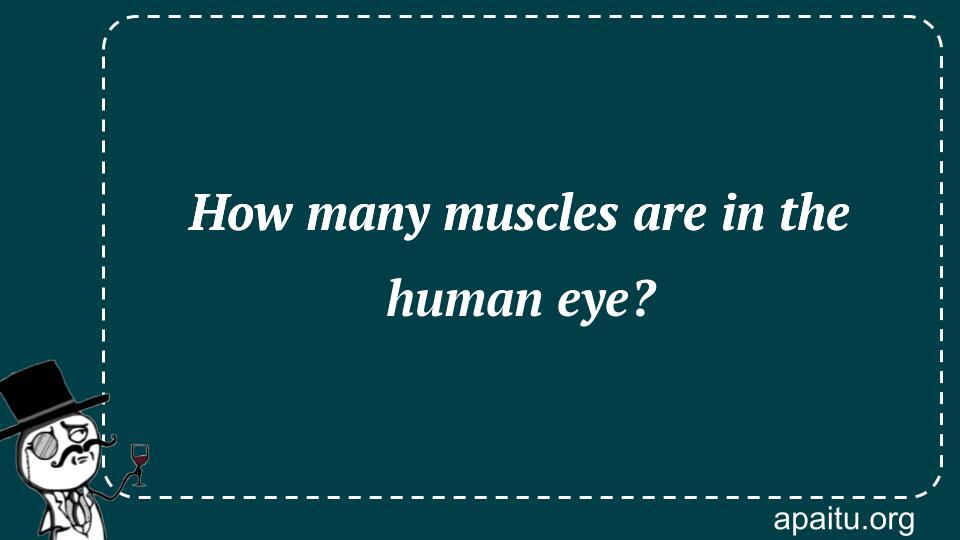Question
Here is the question : HOW MANY MUSCLES ARE IN THE HUMAN EYE?
Option
Here is the option for the question :
- 6
- 15
- 28
- 54
The Answer:
And, the answer for the the question is :
Explanation:
The white portion of the eye, known as the sclera, is coupled to six muscles that allow for eye movement. Because of these muscles, humans are able to stare in any direction without turning their heads. The brain unconsciously organizes the eye muscles so that the eyes move in unison rather than separately.

The human eye is a remarkable organ that allows us to see the world around us. It is also a complex structure that relies on a network of muscles to function properly. In fact, there are six muscles in the human eye that are responsible for controlling its movement and positioning.
The six muscles in the human eye are collectively known as the extraocular muscles. These muscles are attached to the outside of the eye and work together to move the eye in different directions. Each of the six muscles is responsible for moving the eye in a specific direction, such as up, down, or sideways.
The extraocular muscles are controlled by three cranial nerves, which are nerves that originate in the brain and control the movement of various muscles in the head and neck. These three cranial nerves are the oculomotor nerve, the trochlear nerve, and the abducens nerve.
The oculomotor nerve controls four of the six extraocular muscles, including the superior rectus muscle, the inferior rectus muscle, the medial rectus muscle, and the inferior oblique muscle. The superior rectus muscle is responsible for moving the eye upward, while the inferior rectus muscle moves the eye downward. The medial rectus muscle moves the eye inward toward the nose, and the inferior oblique muscle moves the eye outward and upward.
The trochlear nerve controls the superior oblique muscle, which is responsible for moving the eye downward and outward. The abducens nerve controls the lateral rectusmuscle, which is responsible for moving the eye outward away from the nose.
The extraocular muscles work together to allow us to move our eyes in a coordinated way, so we can track moving objects and shift our gaze from one point to another. They also help to maintain visual stability during movements of the head and body.
When the extraocular muscles are not working properly, it can lead to various eye disorders, such as strabismus (a misalignment of the eyes), nystagmus (involuntary eye movements), or diplopia (double vision). These conditions can be caused by a variety of factors, including muscle weakness, neurological disorders, or injury to the eye or head.
Treatment for eye muscle disorders may include exercises to strengthen the muscles, corrective lenses, or surgery to reposition or adjust the muscles. In some cases, eye muscle disorders may be a symptom of an underlying condition, such as multiple sclerosis, thyroid disease, or a brain tumor, so it is important to seek medical attention if you experience any changes in your vision or eye movements.
the human eye relies on a complex network of six extraocular muscles to control its movement and positioning. These muscles work together to allow us to move our eyes in a coordinated way and maintain visual stability. When the extraocular muscles are not working properly, it can lead to various eye disorders, which may require treatment to improve vision and prevent further complications. Understanding